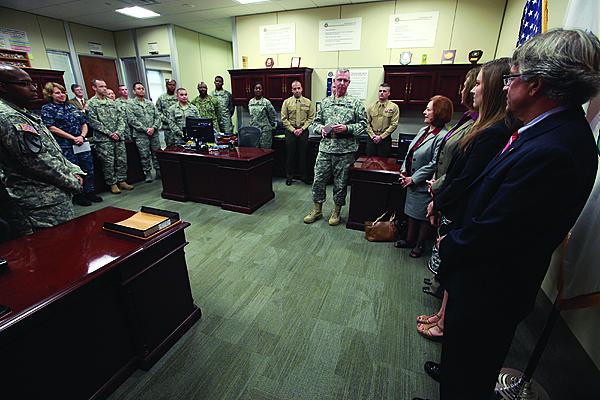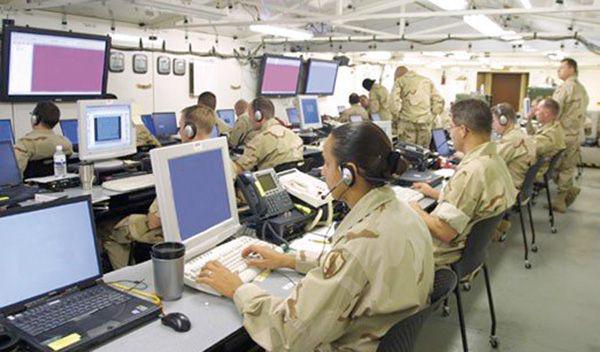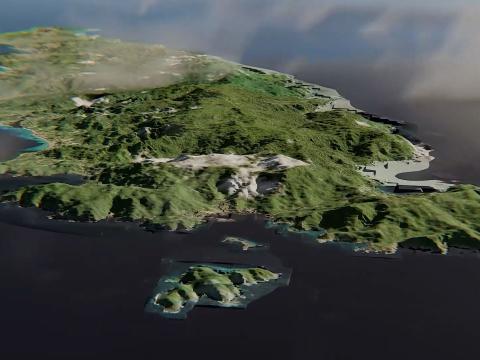What Worked in War, What Lies Ahead
Technologies including voice over Internet protocol, high-definition video and satellite communications altered the battlefield during years of war in Iraq and Afghanistan, but as combat operations draw to a close, different challenges are emerging. Technical, fiscal and personnel changes all are shifting, forcing decision makers to reevaluate activities.
The military is in a transition period, and U.S. Central Command (CENTCOM) is at the heart of the shift. Funding and human resources will be far more limited than in the past decade. Communications experts have put powerful capabilities in place in the command’s region, but the retrograde and alterations in operations mean different methods of employing and understanding them are necessary.
Brig. Gen. John Baker, USA, J-6, CENTCOM, has overseen a series of changes in the area of responsibility and in garrison during his tenure, including a tremendous expansion in the use of voice over Internet protocol (VoIP)/everything over Internet protocol. The move has been a significant advantage, he explains. In addition to that massive alteration in infrastructure came the deployment of black core measures throughout the region. Results of the changes included bandwidth savings with improved security for users. Gen. Baker states that putting black core into theater allows people to employ bandwidth better and with more agility.
The benefits are important as CENTCOM communicators have extended their networks significantly, especially in embassies, to help support security cooperation officers. With the exceptions of Syria and Iran, the United States has an embassy in every country in the command’s area, all of which now connect through VoIP services.
Gen. Baker explains that his staff has built out bandwidth in the theater significantly. In 2000, when the general did a previous tour at the command, services were provided out of bases themselves. Only small projects supported these installations. The terrorist attacks of September 11, 2001, and the resulting conflicts required alternate arrangements to extend outreach, largely through satellite communications (SATCOM). The military purchased more communications bandwidth, mainly on the Ku-band, along with military satellite acquisitions. In Afghanistan and Iraq, the command built out the fiber network to the point where the majority of capacity now is provided through ground and undersea fiber with the minority coming from military and commercial SATCOM.
The fiber buildout includes overland routes through multiple countries in the area in addition to the maritime routes, providing an unprecedented reliability. “We now have a really resilient network,” Gen. Baker states. Previously, the most common disruption to networks came when an anchor cut an underwater cable. “We can now withstand those kind of events,” the general explains.
Increasing bandwidth across the theater enables capabilities. “We have pushed video pretty hard, mostly because of ISR [intelligence, surveillance and reconnaissance] assets,” Gen. Baker says. Most of the gains that made a real difference on the battlefield relate to ISR resources transmitting data through command and control nodes for activities such as exploitation and dissemination, he continues. Most of the video improvements have come through the availability of high definition, which allows the military to use graphics in new ways to identify people, places and objects. However, such streams put constant demand on transmission channels, one reason the new transport channels had to be built.
Other changes during the past several years include using aerostats to extend the range of capabilities to tactical forces and expanding the use of Netted Iridium radios. There was a time when employing such technology forced troops to hold the radio in the position with the best reception and keep trading places to talk on it. “We have improved so much since then,” the general states.
Personnel at the command provide advantages by striving to remain abreast of developments. “We try to stay current or ahead of where we think technology is going,” Gen. Baker says. Sequestration and other budget reductions put stress on these efforts, as leaders must make decisions between what they can afford and what they want.
To improve visibility across its information technology projects, CENTCOM instituted Microsoft Project Server. Decision makers can see all the engineering projects, bringing in both objective and subjective data to have clearer situational awareness for improved choices. The information feeds into Program Objective Assessment Metrics, codifying the measure of effectiveness that the project provides within the program. The tool allows personnel to prioritize resources, which then drive the various future-looking plans in place across the command, most of which are classified so details are unreleasable.
CENTCOM has a strange position among combatant commands in that its in-theater funding is provided by its components, not through other set budgets. Operations depend on what the services contribute, increasing the importance of project prioritization, understanding and clarity.
As combat operations wind down, some of the most important work in theater centers around ensuring communications remain viable during the retrograde and that any channels to be closed are done so appropriately. Gen. Baker explains that plans are in place to ensure contingency capabilities for the last remaining warfighter. Just as the logistics side of the house employs a hub-and-spoke model for the retrograde, the J-6 follows the same idea. A team of government and contractor personnel continue to maintain the communications, a task made easier by the well-integrated network that can provide services until the last minute of the drawdown, according to Gen. Baker.
The command is exploring ways to share network support among the services and other partners as the drawdown progresses. Decisions must take into account NATO nations and how they retrograde their communications as well. CENTCOM works closely with the relevant NATO agencies to ensure that no gaps in coverage occur and strategies are met.
Looking to the future of the combatant command’s operations, the general says, “I think the biggest challenge will be to maintain 100 percent reliability in our network support.” The increasingly constrained fiscal reality of the military service branches will prove a continuing challenge, he adds. CENTCOM has several dozen networks within its boundaries, of which its J-6 has responsibility for about two thirds. Other government organizations run the remainder. Whoever fills the J-6 role has to maintain communications seamlessly across the theater, requiring coordination with other groups in some cases.
Guaranteeing the constant availability of the network means remaining vigilant of the many threats coming out across the world that imperil security. The general’s strategy group, which includes the military, industry and other partners, recently discussed the “Internet of Things” and how every new connection is a potential danger to the network. Defenders must be more aware of a wider surface field, the general explains, and the command is developing expertise in cyber the way it does in other domains.
But the parallels are not quite that simple. The concern in cyber is that an individual person with a single laptop or tablet could introduce a problem into a network and shut down functions. “We see those threats continuing to grow,” Gen. Baker says. However, he is confident that the capabilities under development will work better than before and will mitigate problems.
Also on the horizon of change is the military’s migration to the Joint Information Environment. Gen. Baker says the military sees it as the way forward, and work is underway to combine networks into this larger architecture. Circling back around to budget cuts, though, cost savings and difficult choices will have to be part of every decision. Consolidation and reductions can help address reduced funding as the military adjusts to not having as much in terms of quantities as it had before.
The same considerations necessary for success in the field apply at home as well. CENTCOM is realizing the benefits of upgraded networks as well as enjoying some cost reductions at its headquarters in Tampa, Florida. It moved into a new headquarters, requiring communications personnel to take thousands of employees off old networks and put them on new networks in new buildings. Leaders chose more efficient technologies that save $125,000 per month in energy costs. As part of the move, the command upgraded both the nonsecure and the secret Internet protocol router networks. The improvements updated capabilities and enabled changes in processes for improving services. Gen. Baker says that currently 97 percent of processes work correctly, which he states is an unprecedented number.
One way the J-6 staff altered operations to improve security was to involve commanders more directly in the alerting process. Instead of having all violations reports sent only through network operations channels, these reports now go to leadership. This makes commanders more aware of problems and more likely to address them because they become the commanders’ business. Gen. Baker says this adjustment has created a dramatic reduction in incidents.
Industry members that want to help the CENTCOM J-6 mission can do so best by providing a skilled pool of workers. “I have a really advanced work force here,” Gen. Baker explains. Those employees deal with extremely complex problems, he adds. For example, his strategy group is examining big data analytics, including what industry will have to maintain in that arena. The focus is giving officials better ideas of how to use big data to benefit CENTCOM, where so much data is generated that methods for using it better are necessary.





Comments